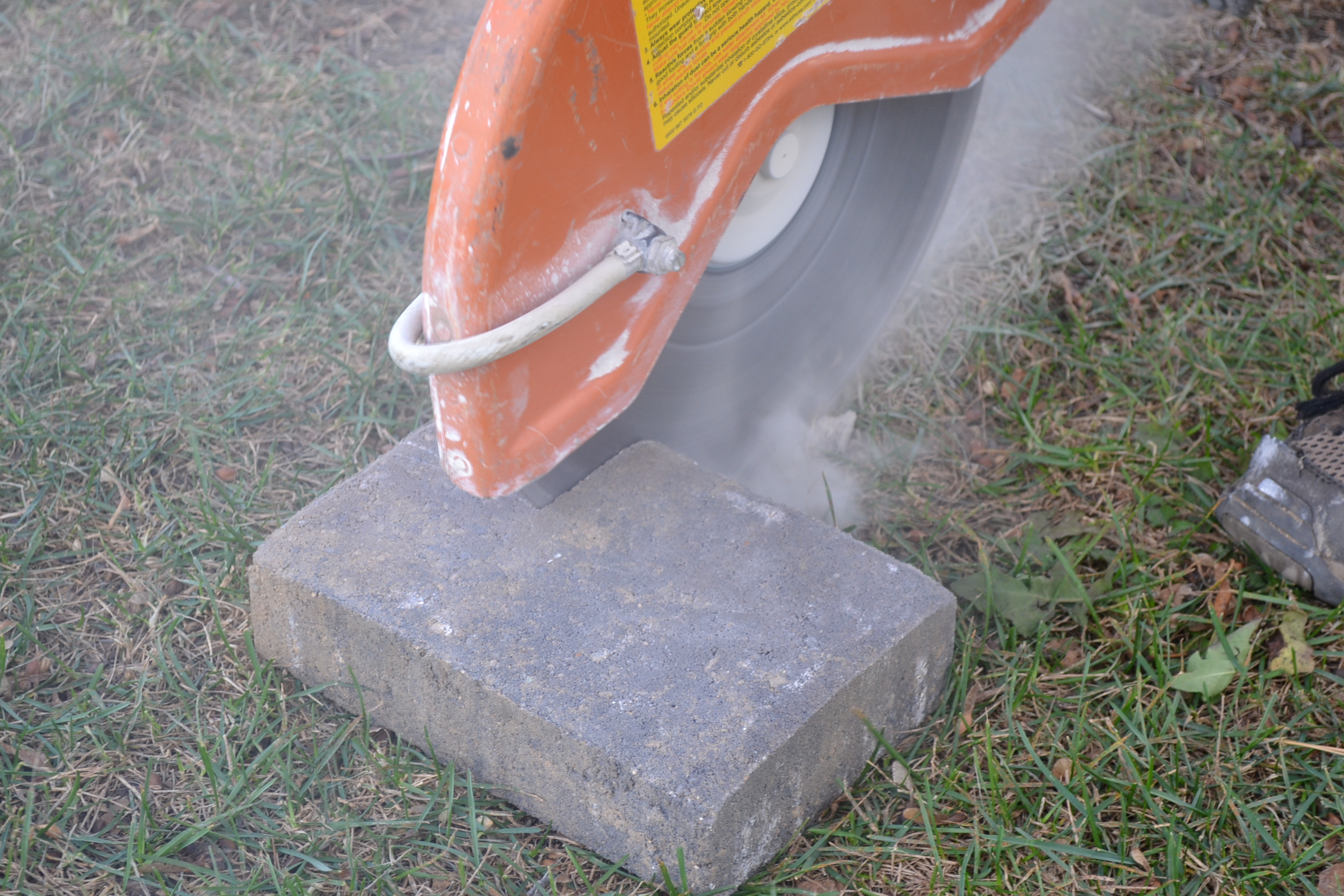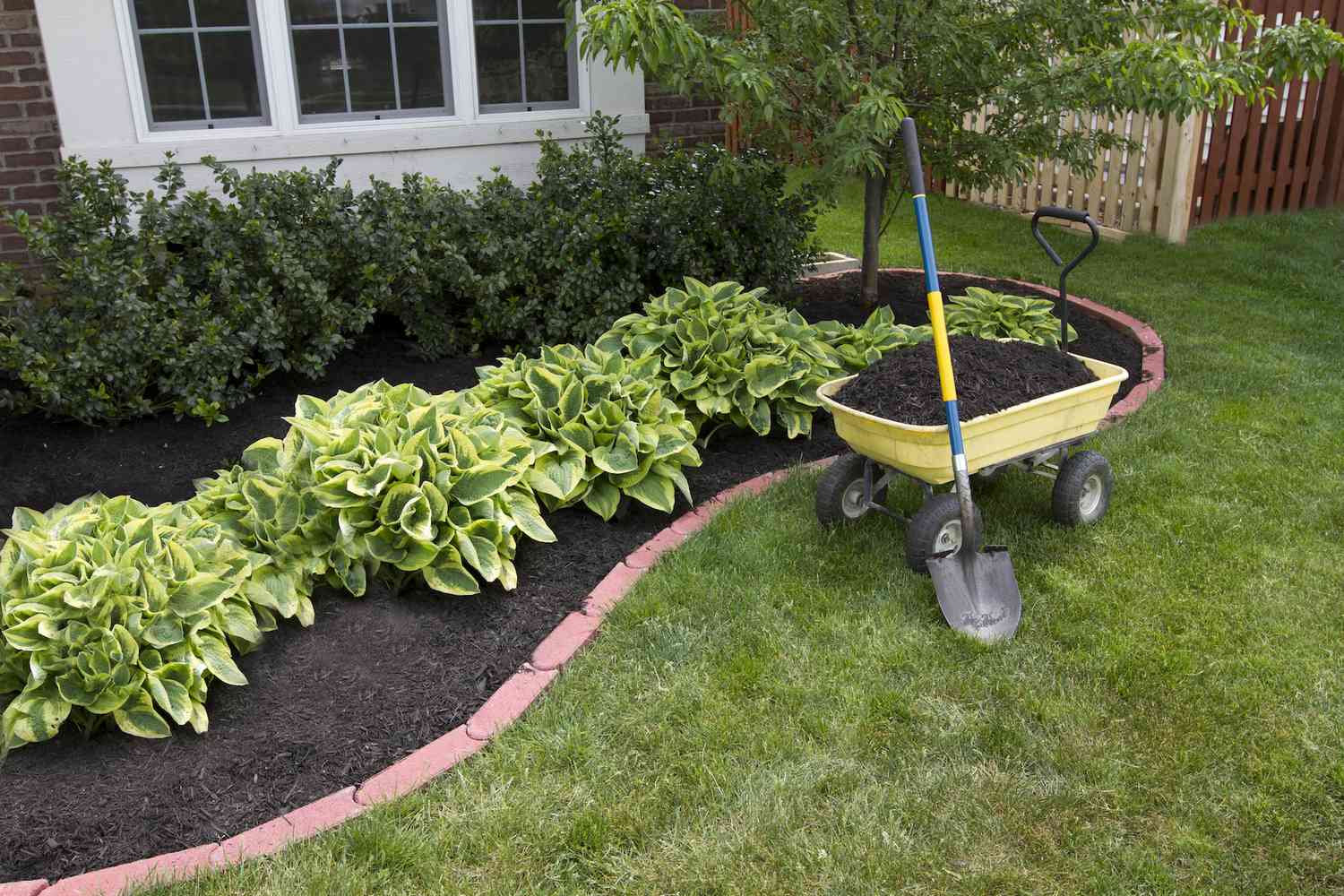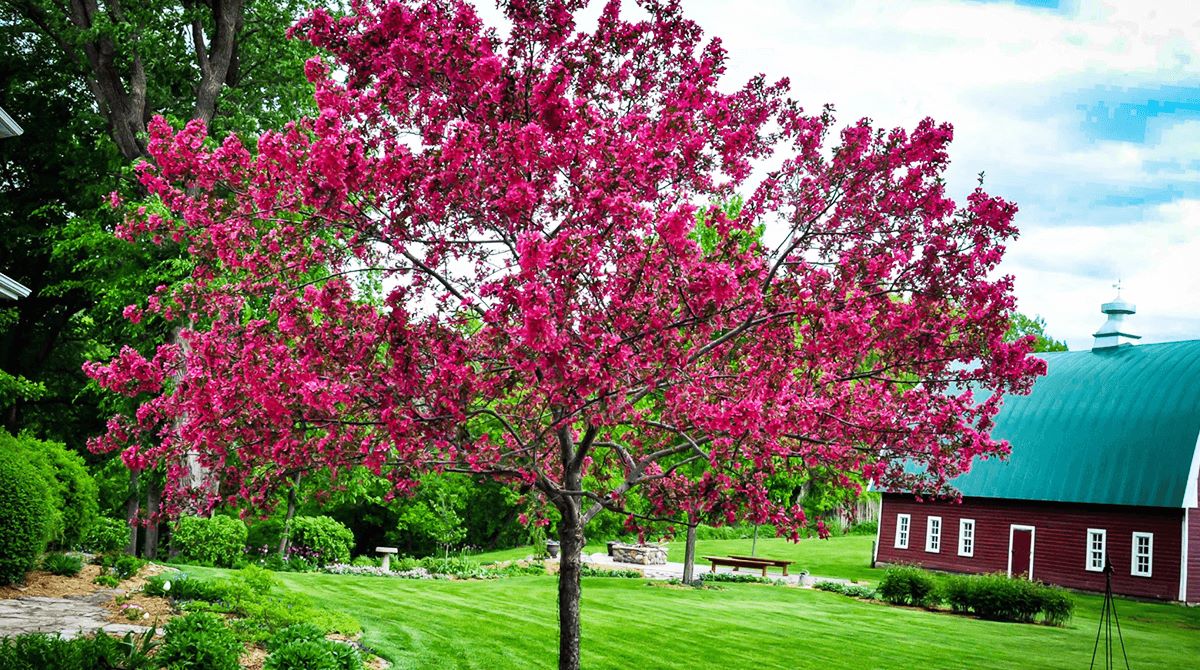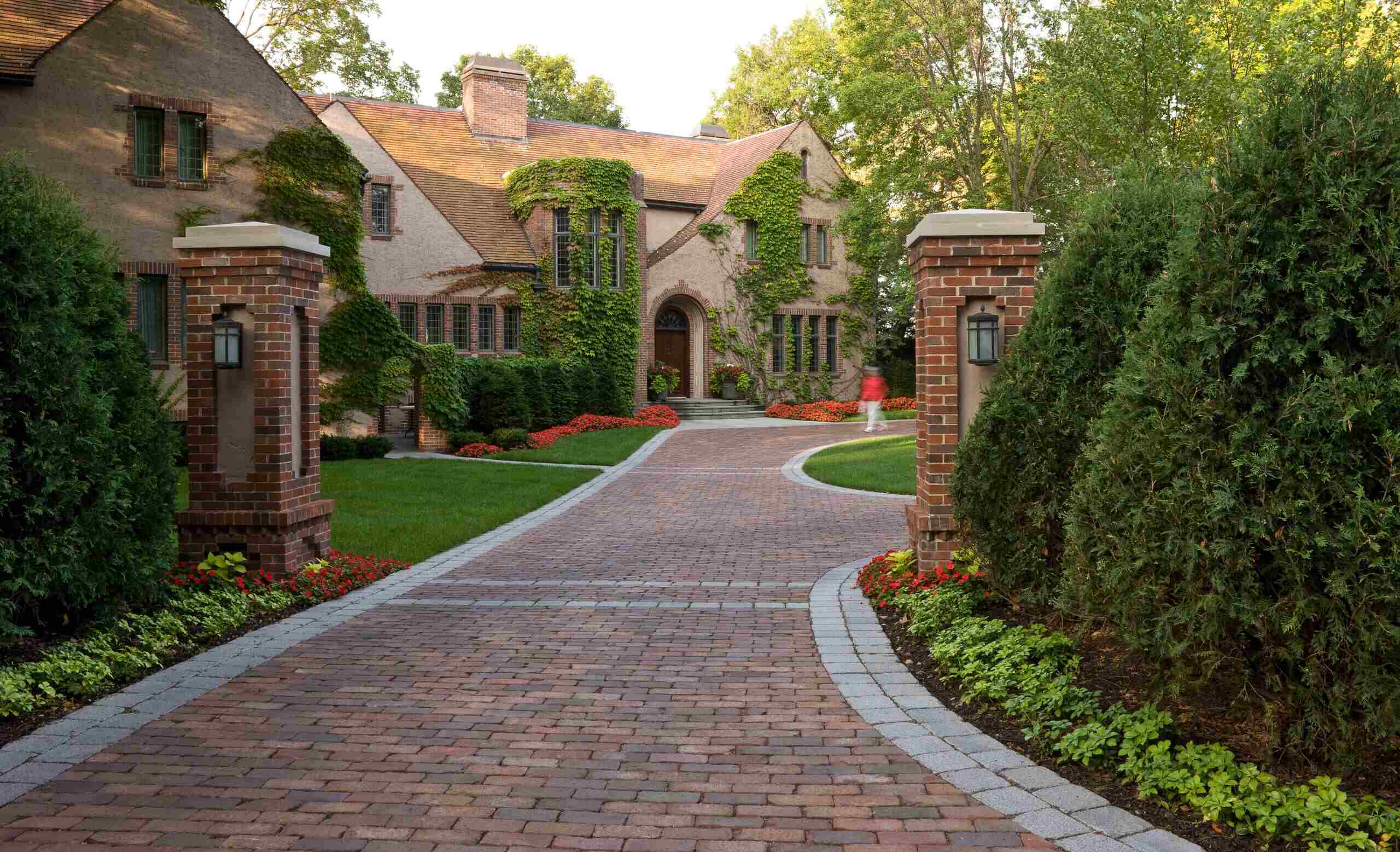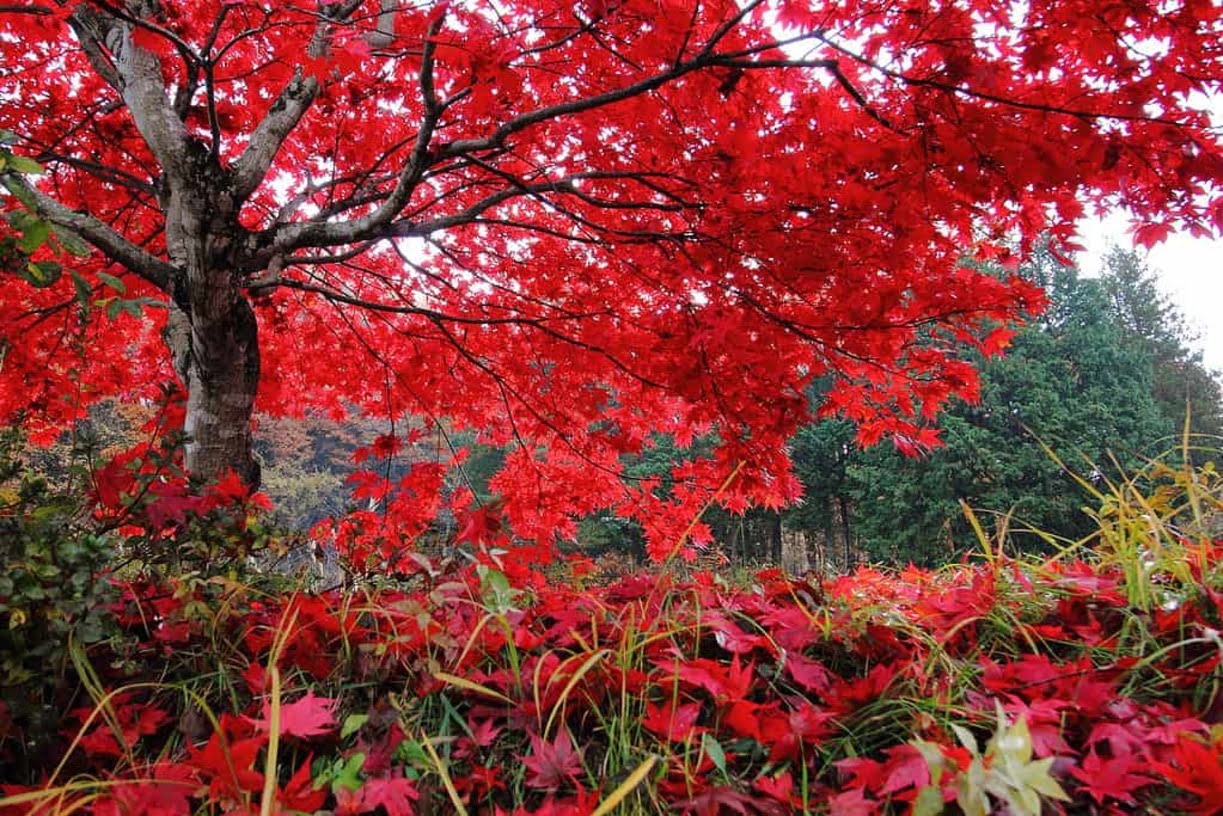Home>Gardening Basics>A Red House Is Made Of Red Bricks What Is A Greenhouse Made Of


Gardening Basics
A Red House Is Made Of Red Bricks What Is A Greenhouse Made Of
Modified: January 22, 2024
Understanding soil: Learn what a greenhouse is made of and how it affects plant growth. Discover the key components for successful gardening in a controlled environment.
(Many of the links in this article redirect to a specific reviewed product. Your purchase of these products through affiliate links helps to generate commission for Chicagolandgardening.com, at no extra cost. Learn more)
Table of Contents
Introduction
Welcome to the world of architecture, where houses come in all shapes, sizes, and colors. While the traditional red brick houses have always caught our attention with their timeless charm, there’s another kind of structure that has gained popularity in recent years – the greenhouse. In this article, we will explore the construction materials and characteristics of both red houses and greenhouses, highlighting their unique features and purposes.
Red houses have a long-standing history in the world of construction. They are known for their durability, classic appeal, and versatility. On the other hand, greenhouses have a more specialized purpose. They are designed to create a controlled environment for cultivating plants, providing them with optimal conditions for growth.
Let’s take a closer look at the construction materials and characteristics of red houses and greenhouses, and how they differ from each other. By understanding the unique features of these structures, we can appreciate their beauty and functionality.
Definition of a Red House
A red house is a type of residential or commercial building characterized by the use of red bricks as the primary construction material. Red houses have a distinctive appearance that exudes warmth, charm, and a sense of tradition.
The use of red bricks in construction dates back centuries, with its origins traced to ancient civilizations. The popularity of red houses can be attributed to the durability and versatility of red bricks. These bricks are made by firing clay at high temperatures, resulting in their signature reddish color.
Red houses can be found in various architectural styles, such as Colonial, Tudor, and Victorian. They can range from small cottages to grand mansions, each with its unique design features. The choice of using red bricks in construction not only adds aesthetic appeal but also offers several practical benefits.
One of the key advantages of red houses is their exceptional durability. Red bricks are known for their strength and resistance to weather elements, making them ideal for withstanding harsh conditions. Additionally, they have good thermal insulation properties, helping to regulate indoor temperature and reduce energy consumption.
Moreover, red houses offer a timeless appeal that transcends trends and fads. The natural color variations and textures of red bricks add character and depth to the façade, creating a visually pleasing and welcoming environment. The warm tones of red also evoke a sense of coziness and comfort, making red houses inviting and charming.
Whether in urban or rural settings, red houses blend seamlessly with their surroundings. The use of red bricks allows architects and homeowners to create structures that complement the landscape and architectural style of the area. Red houses are often associated with a sense of heritage and tradition, making them stand out in any neighborhood.
In summary, a red house is a building constructed using red bricks as the primary material. These houses are known for their durability, thermal insulation properties, and timeless aesthetic appeal. Whether in a small cottage or a grand mansion, red houses bring a sense of tradition and warmth to any environment.
Construction Materials of a Red House
A red house is primarily constructed using red bricks, which serve as the foundational material for the structure. These bricks are made from clay that is formed into rectangular shapes and fired in a kiln at high temperatures, resulting in their characteristic reddish hue.
In addition to red bricks, other materials are used in the construction of a red house to complete its framework and provide essential functionality. These materials include:
- Foundation: The foundation of a red house is typically made of concrete or stone. It provides stability and support for the entire structure, ensuring that the house remains strong and structurally sound.
- Roofing: The roof of a red house is usually constructed using materials such as asphalt shingles, clay tiles, or slate. These materials offer protection against the elements and contribute to the overall aesthetic appeal of the house.
- Windows and Doors: Red houses often feature windows and doors made of various materials, including wood, vinyl, or metal. These components not only provide natural light and ventilation but also add architectural interest to the house.
- Exterior Finishes: Apart from red bricks, red houses may have additional exterior finishes to enhance their appearance and protect them from moisture and weathering. These finishes can include stucco, siding, or stone veneers, which can be chosen to complement the red brick façade.
- Interior Components: Inside the red house, various materials are used for flooring, walls, and ceilings. Common materials for these components include hardwood, laminate, or tile for flooring, drywall or plaster for walls, and plaster or ceiling tiles for ceilings.
- Insulation: To ensure energy efficiency and a comfortable living environment, red houses are often insulated using materials such as fiberglass or foam. Insulation helps retain heat during colder months and keeps the interior cool during warmer seasons.
The combination of these construction materials contributes to the overall structural integrity, aesthetics, and functionality of a red house. They work together to create a sturdy and visually appealing dwelling that can withstand the test of time.
Characteristics of Red Bricks
Red bricks, the primary construction material used in red houses, possess several unique characteristics that make them a popular choice among builders and homeowners alike. These characteristics contribute to the durability, aesthetics, and insulating properties of red houses. Let’s explore the key features of red bricks:
- Durability: Red bricks are known for their exceptional strength and durability. Made by firing clay at high temperatures, they can withstand harsh weather conditions, including extreme heat, freezing temperatures, and moisture. This durability ensures that red houses built with red bricks can last for generations.
- Thermal Insulation: Red bricks have natural thermal insulation properties that help regulate temperature inside the house. They possess high thermal mass, meaning they can absorb and store heat, releasing it slowly to maintain a comfortable indoor environment. This insulation reduces the need for excessive heating and cooling, leading to energy savings.
- Aesthetic Appeal: The natural color variations and textures of red bricks add visual interest and character to red houses. The warm, earthy tones of red bricks create an inviting and timeless look that complements different architectural styles. Furthermore, red bricks can be laid in various patterns, allowing for creative and unique designs.
- Fire Resistance: Red bricks are highly fire-resistant due to their composition and firing process. They do not easily catch fire or contribute to the spread of flames, making them a safer choice for house construction. This fire resistance adds an additional layer of protection for homeowners and their property.
- Low Maintenance: Red bricks require minimal maintenance, enhancing their appeal for homeowners. They are resistant to rot, decay, and pests, reducing the need for frequent repairs or replacements. Additionally, their natural color does not fade over time, ensuring that the aesthetic appeal of red houses remains intact.
- Sustainable Choice: Red bricks are an environmentally friendly option for construction. They are made from natural clay, a renewable resource, and their longevity means fewer resources are required for maintenance or replacement. Additionally, the thermal insulation properties of red bricks contribute to energy efficiency, reducing greenhouse gas emissions.
These characteristics make red bricks an excellent choice for constructing red houses. They provide both structural integrity and aesthetic appeal, resulting in timeless and sustainable dwellings.
Definition of a Greenhouse
A greenhouse is a specialized structure designed to create and maintain an optimal environment for the cultivation of plants. It provides a controlled and protected space for plants to grow, offering protection from external elements and allowing for year-round cultivation.
Greenhouses are typically made of transparent materials such as glass or polycarbonate, which allow sunlight to enter the structure. The transparent walls and roof trap solar energy, creating a greenhouse effect. This effect helps to maintain higher temperatures inside the greenhouse compared to the surrounding environment.
The primary purpose of a greenhouse is to regulate factors such as temperature, humidity, light intensity, and air circulation to create ideal growing conditions for plants. This controlled environment allows farmers, gardeners, and horticulturists to extend the growing season and cultivate plants that might not thrive in their natural climate or during certain seasons.
Greenhouses come in various sizes and designs, ranging from small backyard structures to large commercial facilities. They can be freestanding or attached to existing buildings, and their design can be customized to meet specific growing needs.
Greenhouses provide several benefits over traditional outdoor cultivation methods. They offer protection against extreme weather conditions, such as frost, hail, and excessive heat. The controlled environment also helps to prevent pests and diseases, reducing the need for pesticides and herbicides.
Additionally, greenhouses allow for efficient use of water as it is typically recycled within the structure, minimizing waste. The controlled environment also enables optimized plant nutrition by providing the right balance of water, nutrients, and oxygen to enhance growth and productivity.
Greenhouses are widely used for commercial plant production, research and experimentation, as well as for home gardening. They offer a versatile and efficient means to grow a wide variety of plants, including flowers, vegetables, herbs, and even exotic or delicate species.
In summary, a greenhouse is a specialized structure that creates a controlled environment for plant cultivation. By regulating factors such as temperature, humidity, and light, greenhouses provide ideal growing conditions for plants, extending the growing season and allowing for year-round cultivation.
Construction Materials of a Greenhouse
A greenhouse is constructed using a combination of materials that provide structural support, insulation, and transparency to create a controlled environment for plant cultivation. The materials used in greenhouse construction vary depending on factors such as budget, climate, and specific growing requirements. Let’s explore the common construction materials of a greenhouse:
- Frames: The frame of a greenhouse provides the structural support and stability for the entire structure. Common materials used for greenhouse frames include aluminum, galvanized steel, or wood. These materials are chosen for their durability, resistance to corrosion, and ability to withstand the weight of the structure.
- Glass: Glass is a popular choice for greenhouse coverings due to its transparency, durability, and ability to allow sunlight to penetrate the structure. It provides excellent light transmission, contributing to plant growth. However, glass can be heavy and more expensive compared to other options.
- Polycarbonate: Polycarbonate is a lightweight and shatter-resistant material that is often used as an alternative to glass. It provides good insulation properties, UV protection, and diffused light transmission. Polycarbonate panels are available in different thicknesses, allowing for customization based on climate conditions.
- Polyethylene Film: Polyethylene film is a cost-effective option for greenhouse covering. It is lightweight, easy to install, and provides good light transmission. However, polyethylene film has a shorter lifespan compared to glass or polycarbonate and may require replacement after a few years.
- Insulation Materials: To maintain a controlled environment inside the greenhouse, insulation materials are used to reduce heat loss during colder months and prevent excessive heat buildup during warmer periods. Common insulation materials include bubble wrap, foam panels, or double-layered coverings.
- Doors and Vents: Greenhouses require doors for access and vents for proper air circulation. These components are typically made of materials such as aluminum, wood, or polycarbonate, providing both durability and functionality.
- Additional Accessories: Depending on the specific needs of the greenhouse, additional accessories may be incorporated into the construction. This can include shading systems, irrigation systems, benches, and plant hanging systems, all designed to enhance plant growth and productivity.
The choice of construction materials for a greenhouse is crucial in creating and maintaining the desired growing conditions. Factors such as durability, light transmission, insulation, and affordability must be considered when selecting the materials for each component of the greenhouse structure.
Characteristics of Greenhouse Materials
The materials used in the construction of greenhouses play a vital role in maintaining the desired growing environment for plants. These materials possess specific characteristics that contribute to the functionality, durability, and efficiency of the greenhouse. Let’s explore the key characteristics of greenhouse materials:
- Transparency: Greenhouse materials, such as glass or polycarbonate, are chosen for their transparency, which allows sunlight to enter the structure. Transparent materials maximize the amount of natural light reaching the plants, essential for photosynthesis and plant growth.
- Light Transmission: Greenhouse materials should have high light transmission properties to ensure that plants receive an optimal amount of light. The materials used should not excessively block or filter out sunlight, but rather allow for efficient light penetration throughout the greenhouse.
- Durability: Greenhouse materials need to be durable enough to withstand various weather conditions, such as wind, hail, and heavy snow loads. Materials like tempered glass, polycarbonate, or reinforced plastics are chosen for their strength, impact resistance, and ability to withstand environmental stressors.
- Insulation: Greenhouse materials should possess good insulation properties to help regulate the temperature inside the structure. Insulating materials like double-layered polycarbonate panels or bubble wrap create an insulating layer that minimizes heat loss during colder months and prevents excessive heat buildup during warmer periods.
- UV Protection: Greenhouse materials should provide UV protection to shield the plants from excessive exposure to ultraviolet radiation. This protection helps prevent plant damage, sunburn, or the onset of diseases caused by excessive UV exposure.
- Resistance to Corrosion: Greenhouse materials should be resistant to corrosion and degradation caused by moisture and other environmental factors. Materials like aluminum or galvanized steel are often used for the greenhouse frame to ensure long-lasting durability.
- Light Diffusion: Some greenhouse materials, such as certain types of polycarbonate panels, offer light diffusion properties. Light diffusion helps distribute sunlight more evenly within the greenhouse, reducing the formation of hotspots and promoting uniform plant growth.
- Flexibility: Certain greenhouse materials, like polycarbonate or polyethylene film, are flexible and easy to work with. Their flexibility allows for customization, such as curving the materials to create specialized greenhouse shapes or structures.
By considering these characteristics, greenhouse materials are carefully chosen to create an environment that promotes optimal plant growth, protects against environmental factors, and ensures the longevity and functionality of the greenhouse structure.
Comparison between Red Houses and Greenhouses
While red houses and greenhouses may both be structures built with specific purposes in mind, they differ in their construction materials, design, and functionality. Let’s compare the key differences between red houses and greenhouses:
- Construction Materials: Red houses are predominantly constructed using red bricks, providing durability, thermal insulation, and classic appeal. In contrast, greenhouses are made of transparent materials such as glass or polycarbonate, enabling light transmission and creating a controlled environment for plant cultivation.
- Purpose: Red houses serve as residential or commercial spaces, accommodating human inhabitants. They provide shelter, comfort, and aesthetic appeal. Greenhouses, on the other hand, are designed specifically for plant cultivation. They create an optimized environment that allows plants to grow and thrive, extending the growing season and protecting them from external elements.
- Design and Structure: Red houses come in various architectural styles and sizes, reflecting the individual preferences and needs of homeowners. They feature rooms, doors, windows, and other amenities to accommodate human habitation. Greenhouses, in contrast, have a simpler design focused on functionality. Their structure is optimized for maximum light transmission, airflow, and temperature control to meet the needs of the plants grown inside.
- Environment Control: While red houses can be equipped with heating and cooling systems to maintain a comfortable indoor temperature, greenhouses have more sophisticated climate control mechanisms. They employ ventilation, shading, irrigation, and heating systems to regulate temperature, humidity, and light levels, creating an ideal environment for plant growth.
- Beneficiaries: Red houses primarily benefit the human occupants by providing shelter, comfort, and a sense of home. Greenhouses, however, benefit plants by offering a protected and controlled environment that promotes optimal growth and productivity. They are also advantageous for farmers, gardeners, and horticulturists who rely on year-round plant cultivation.
- Construction Cost: Red houses typically involve a more extensive construction process due to their complex structure and the need for interior amenities. Greenhouses, while still requiring careful construction, tend to be more straightforward in design and can be more cost-effective to build.
Both red houses and greenhouses serve important purposes in their respective domains. Red houses provide comfortable and appealing spaces for human occupation, while greenhouses offer a controlled environment for plant cultivation. Their materials, design, and functionality are tailored to meet the specific needs of their occupants, whether human or plant, providing suitable living and growing conditions.
Importance and Benefits of Greenhouses
Greenhouses play a crucial role in modern agriculture and horticulture, offering numerous benefits for farmers, gardeners, and the environment. Let’s explore the importance and benefits of greenhouses:
- Year-round Cultivation: Greenhouses provide a controlled environment that allows plants to be cultivated year-round, regardless of the external climate or season. This extended growing season enables farmers and garden enthusiasts to produce crops even during colder months, fostering a more consistent and reliable food supply.
- Protection from External Elements: Greenhouses shield plants from adverse weather conditions, such as frost, hail, heavy rain, and strong winds. This protection prevents plant damage and decreases the risk of crop failure, ensuring a more stable yield and income for farmers.
- Pest and Disease Control: By isolating plants from the outside environment, greenhouses help prevent infestations by pests and diseases that could harm crops. This reduces the need for harmful chemical pesticides and allows for more sustainable and eco-friendly agricultural practices.
- Optimized Growing Conditions: Greenhouses allow growers to finely control temperature, humidity, light levels, and air circulation. This customization enables optimal growing conditions for specific plants, maximizing their yield, quality, and overall health.
- Expand Plant Variety: With the controlled environment provided by greenhouses, it becomes possible to grow a wide range of plant species that may not be suitable for the local climate. This opens up opportunities to cultivate exotic or delicate plants, expanding the variety of crops that can be grown locally.
- Sustainable Water Usage: Greenhouses often incorporate efficient irrigation systems that recycle and conserve water. This minimizes water waste and ensures that plants receive the precise amount of water they need, reducing water consumption and promoting sustainable usage in agriculture.
- Increased Crop Productivity: The optimized growing conditions, protection from external factors, and efficient resource usage in greenhouses result in higher crop productivity compared to open-field cultivation. Growers can achieve multiple harvests per year, leading to increased profitability and economic stability.
- Local Food Production: Greenhouses enable local food production, reducing transportation distances and carbon emissions associated with importing produce from distant regions. This promotes local food security, supports the local economy, and encourages sustainable agricultural practices.
- Environmental Conservation: Greenhouses contribute to the conservation of natural resources by using water and fertilizers more efficiently, reducing pesticide usage, and minimizing land requirements for crop production. This helps preserve biodiversity and promotes more sustainable agricultural practices.
The importance and benefits of greenhouses go beyond simple plant cultivation. They offer solutions to food security, sustainable agriculture, environmental conservation, and local economic development. By providing a controlled environment for plants, greenhouses play a vital role in ensuring a more sustainable and resilient future for agriculture.
Conclusion
Red houses and greenhouses are two distinct structures that serve different purposes but share a common focus on creating suitable environments. Red houses provide shelter and comfort for humans, with their durable construction using red bricks. On the other hand, greenhouses are designed to create controlled conditions for plant cultivation, utilizing transparent materials and advanced climate control systems.
Red houses embody a sense of tradition, with their timeless appeal and versatility in various architectural styles. The use of red bricks not only adds aesthetic charm but also offers durability and thermal insulation. Red houses create warm and inviting living spaces, blending seamlessly with their surroundings.
Greenhouses, on the other hand, enable year-round plant cultivation by providing optimized growing conditions. They shield plants from extreme weather, pests, and diseases while enhancing crop productivity. Greenhouses utilize transparent materials like glass or polycarbonate to maximize light transmission and facilitate photosynthesis.
The importance and benefits of greenhouses cannot be overstated. They extend the growing season, protect crops, optimize resource usage, and promote sustainable agriculture. Greenhouses play a pivotal role in local food production, reducing reliance on imported produce and supporting community resilience. Furthermore, they contribute to environmental conservation by minimizing water and energy waste and promoting eco-friendly practices.
In conclusion, red houses and greenhouses, though distinct in their purposes and construction materials, both hold significance in their respective domains. Red houses create inviting and durable living spaces, while greenhouses enable year-round cultivation and contribute to sustainable agriculture. Each structure serves its intended purpose and provides unique benefits to society, enhancing our quality of life and fostering a more sustainable future.
